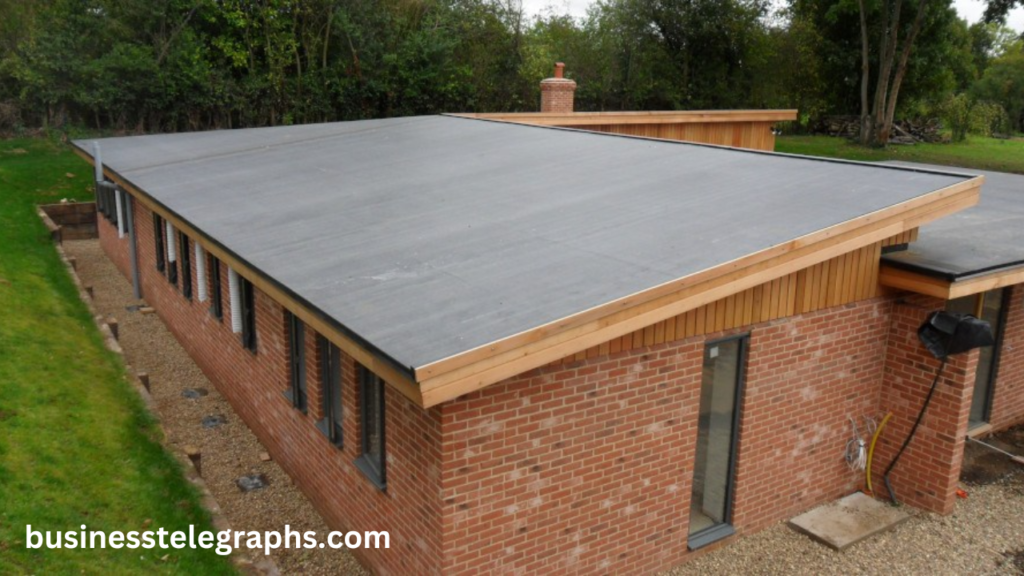How to Core New Outlet Into Flat Roof A Complete Guide

Flat roofs are a common feature in both commercial and residential buildings due to their modern aesthetic and cost-effective design. However, one of the main challenges with flat roofs is ensuring proper drainage. Without adequate drainage, water can pool on the surface, leading to leaks, structural damage, or the formation of ice dams in cold climates. To prevent this, core new outlet into flat roof are often equipped with drainage outlets that channel water away from the roof.
Sometimes, an existing outlet may be insufficient, or a new outlet may be required to improve drainage. Coring a new outlet into a flat roof is a critical process that must be done carefully to prevent damage to the roof system. This article will guide you through the steps to core a new outlet into a flat roof, ensuring effective drainage while maintaining the roof’s integrity.
What Is core new outlet into flat roof?
Coring a flat roof involves cutting through the roof material to remove a sample or create an opening for an outlet. This is typically done using a core cutter, which is a circular tool designed to extract a clean hole of the desired size and depth. Core new outlet into flat roof is essential when a new drain or outlet needs to be added, or when testing the roof structure for damage or issues such as moisture buildup.
A core sample may include several layers, depending on the type of roofing system. For example, if the roof has a built-up membrane, the core will capture the various layers of bitumen, insulation, and protective coatings. Coring can also be done to investigate the condition of a roof, especially when there are concerns about leaks or water damage.
Why You Might Need to Core a New Outlet
There are several reasons why you may need to core a new outlet into a flat roof:
Improper Drainage: One of the most common reasons for coring a new outlet is to improve the drainage on a flat roof. If water pools in certain areas, it can lead to damage over time. Adding an outlet can help direct water more effectively towards the existing drainage system.
Retrofit Projects: If you’re renovating or adding to a building, a new outlet may be needed to meet modern drainage requirements. This can be part of a broader roof upgrade or a response to issues identified in inspections.
New Construction: In some cases, a core new outlet into flat roof may not have enough outlets to handle the volume of water. This could be due to changes in building codes or an oversight during construction. Adding new outlets ensures that the roof can handle rainwater and prevent pooling.
Preventing Leaks: Installing a new outlet can also be a preventive measure to ensure that the roof is functioning as intended. Poorly positioned or damaged outlets can allow water to back up under the membrane, which can lead to leaks and further damage.
Materials and Tools Required
Before starting the coring process, you will need the following materials and tools:
Tools:
- Core Cutter: A core cutter is the most important tool for this job. It has a circular blade that allows you to cut through the roof layers. The size of the core cutter depends on the diameter of the outlet you intend to install.
- Drill: A heavy-duty drill is required to operate the core cutter. Make sure that the drill is powerful enough to cut through tough roof materials.
- Measuring Tape: Accurate measurements are crucial to ensure that the outlet is placed correctly.
- Level: A level helps ensure the outlet will sit properly and direct water in the right direction.
- Sealant: Roof sealant will be necessary to ensure that the edges of the outlet are watertight once installed.
- Flashing: Flashing is used around the outlet to prevent water from leaking around the base of the outlet and causing damage to the roof.
- Safety Gear: You’ll need safety gloves, goggles, and other personal protective equipment (PPE) to keep yourself safe during the process.
Materials:
- Roof Membrane: Depending on the type of flat roof you have, you may need to work with materials such as EPDM, TPO, or modified bitumen.
- Drains/Outlets: Select an outlet that is suitable for the size of your roof and can handle the amount of water expected in the area.
- Rubber Gasket or Sealant: To prevent leaks around the outlet and ensure a secure fit.
Pre-Coring Preparation core new outlet into flat roof
Before beginning the coring process, it’s important to prepare the area and gather all necessary materials.
Assess the Roof: Inspect the roof to ensure that there are no existing issues such as structural damage, leaks, or weakened sections. A detailed inspection will allow you to select the best location for the new outlet and avoid any potential obstacles, like beams or wiring underneath.
Identify the Outlet Location: Plan where the new outlet will go. The best place for the outlet is generally at the lowest point of the roof to ensure effective drainage. You’ll want to consider the slope of the roof and the direction of water flow when determining the outlet’s placement.
Check Roof Layer Composition: Understand the layers that make up your roof. Depending on whether you have a built-up roof (BUR), EPDM, TPO, or another membrane, you’ll need to select the right core cutter and adjust your technique accordingly.
Set Up the Area: Clear the work area and mark the spot where you’ll be coring the roof. Make sure that you have adequate access to the roof and can safely move around during the job.
The Coring Process: Step-by-Step Guide
Once you’re fully prepared, it’s time to start coring the new outlet into the core new outlet into flat roof.
Mark the Core Location
Using a measuring tape, find the optimal location for the new outlet. Mark the center of the spot clearly. A chalk line or pencil mark can be used to make sure the spot is visible throughout the process.

Attach the core new outlet into flat roof Cutter to the Drill
Select the appropriate core cutter based on the diameter of the outlet. Ensure the cutter is sharp enough to handle the roof material you’re working with.
Begin Drilling
Position the core cutter on the marked spot and start drilling. Keep the drill steady and apply consistent pressure to avoid uneven coring. The cutter will begin to cut through the layers of the roof, removing a cylindrical section of the material.
- Note: You want to make sure the cutter goes deep enough to remove the roof layers but avoid cutting too deeply into the underlying structure.
Remove the Core
Once the core cutter has drilled through the core new outlet into flat roof, carefully lift the core out of the hole. The core will contain a sample of the roof material, which can be useful for future analysis if necessary.
Clean the Hole
Remove any debris or loose material from the hole using a vacuum or brush. The hole should be clean and free of obstruction to allow the new outlet to fit securely.
Install the Outlet
Place the new outlet into the hole. It should fit snugly, so ensure that you’re using the correct size outlet. If necessary, apply a rubber gasket or sealant around the base of the outlet to ensure a watertight seal.
Secure the Outlet and Seal the Edges
Use flashing or additional sealant to secure the edges of the outlet and prevent leaks. The flashing should be installed around the perimeter of the outlet, ensuring that water flows directly into the drain rather than around the edges.
Post-Coring Inspection and Testing
After the outlet is installed, it’s crucial to inspect the work and perform a test to ensure everything is functioning properly.
Inspection:
- Check the outlet to ensure that it is properly seated and sealed.
- Verify that the flashing is securely installed and properly directing water away from the roof.
Testing:
- Use a hose or other water source to check if water flows efficiently into the new outlet.
- Look for any leaks or signs of water pooling around the outlet.
Common Mistakes to Avoid core new outlet into flat roof
While coring a flat roof can seem straightforward, there are several common mistakes to avoid:
- Incorrect Placement: Be sure to place the outlet at the lowest point of the roof to ensure water drains properly.
- Improper Sealing: If the outlet is not sealed properly, water can seep around the edges and cause damage to the roof.
- Not Testing the Outlet: Failing to test the new outlet after installation can lead to issues down the line, such as leaks or poor drainage.
Final Thoughts
Coring a new outlet into a core new outlet into flat roof is a specialized task that requires precision and attention to detail. When done correctly, it can significantly improve drainage and prevent future damage to the roof. Ensure that you use the right tools, follow the proper procedures, and take safety precautions during the process. If you’re unsure or inexperienced, consider hiring a professional roofer to handle the job to guarantee that the work is done safely and effectively.
By following this guide, you can successfully core a new outlet into a flat roof, ensuring proper water management and protecting your building from potential roof-related issues.







